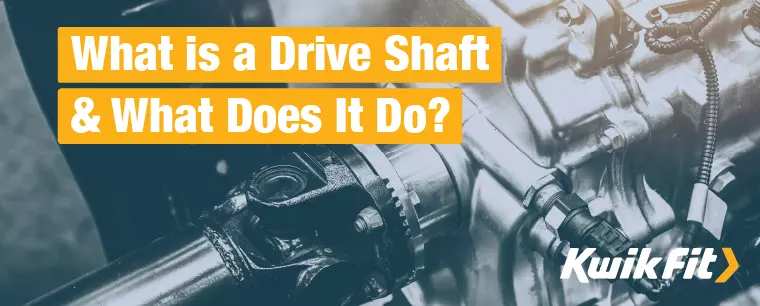What is a Drive Shaft & What Does It Do?
Jack Dreyer | Tuesday 14th February 2023 9:00am

We’ve explored how combustion engines work in another post here: the engine cylinders combust a fuel-air mixture to push pistons up and down in order to provide a rotational force. This rotational force is then connected to a flywheel to maintain momentum, then a clutch to be able to control the changing of gears.
All of this goes towards making a car not only driveable but comfortable.
The drive shaft comes after the gearbox. It exists to transmit the torque (rotational force) provided by the engine to the wheels themselves in order to actually get the car moving. But why is it necessary to have one, and do all cars have drive shafts? Let’s find out!
Drive shafts need to transmit engine power
Almost all vehicles on the road have the engine at the front and are front-wheel drive. This helps to make them more stable as the front wheels essentially pull the car forwards, but this stability can come at the cost of performance. The extra weight at the front usually means that the steering can be more sluggish.
With the engine in front and the vehicle being a front-wheel drive, the power from the engine doesn’t need to be transmitted very far – but it still needs to be transmitted. This is where drive shafts come in.
Originally, the engine power would be transmitted through a belt or chain mechanism directly to the wheels, much like modern bicycles or motorbikes still use. But with the complexity of having to transmit this power while steering, the development of drive shafts became necessary.
And it’s not just a case of steering – the components that make cars move also need to withstand the pressures and forces of being in motion. That is, roads aren’t perfect, and if you had to re-attach a drive belt each time you hit a particularly bad pothole, you’d likely consider alternative transport quite quickly!

How do drive shafts work?
The main challenge that drive shafts need to overcome is the independent movement of the car’s axles in a variety of directions. A worm-drive screw (or any screw, for that matter) can be used to transmit power at a 90° angle, but relying on a single screw-drive would result in it breaking as soon as you wanted to steer or as soon as you need one wheel to adapt independently to a surface – in short, you need to account for relative movement of different elements in the drivetrain.
Essentially, for suspension on each wheel to work and create a safer, more comfortable drive, you need to have a drive shaft that can move within an expected field of movement.
This is achieved through using a component called a universal joint.
It uses two components that are joined using (usually) a cross-shaped mechanism – and this connection lets each component rotate at the same rate but at different angles relative to each other!
Heading 2 with Paragraph
If your car’s steering has started to behave strangely, or there seems to be different power applied in different situations, you may have a problem with your drive shaft!
Get in touch with your local Kwik Fit centre — our experts are always on hand to help.
Any facts, figures and prices shown in our blog articles are correct at time of publication.
Featured Articles
Is Your Car Battery Ready for Winter?
Monday 11th November 2024
Is the UK on the verge of ‘the coldest winter for 50 years?’ Even if El Niño doesn't hit the UK this winter, reduce the risk of a winter breakdown by making sure your car battery is winter-ready.
Your Ultimate Winter Driving Checklist
Monday 31st October 2022
Driving in the colder months presents many challenges. Breakdowns are far more common in winter, so make sure you’re prepared with these essentials.
How to Get Your Car Ready for Winter
Wednesday 28th September 2022
Winter can be a harsh season for your car but planning ahead by carrying out some basic maintenance and packing some essential kit should help you avoid a winter breakdown.







